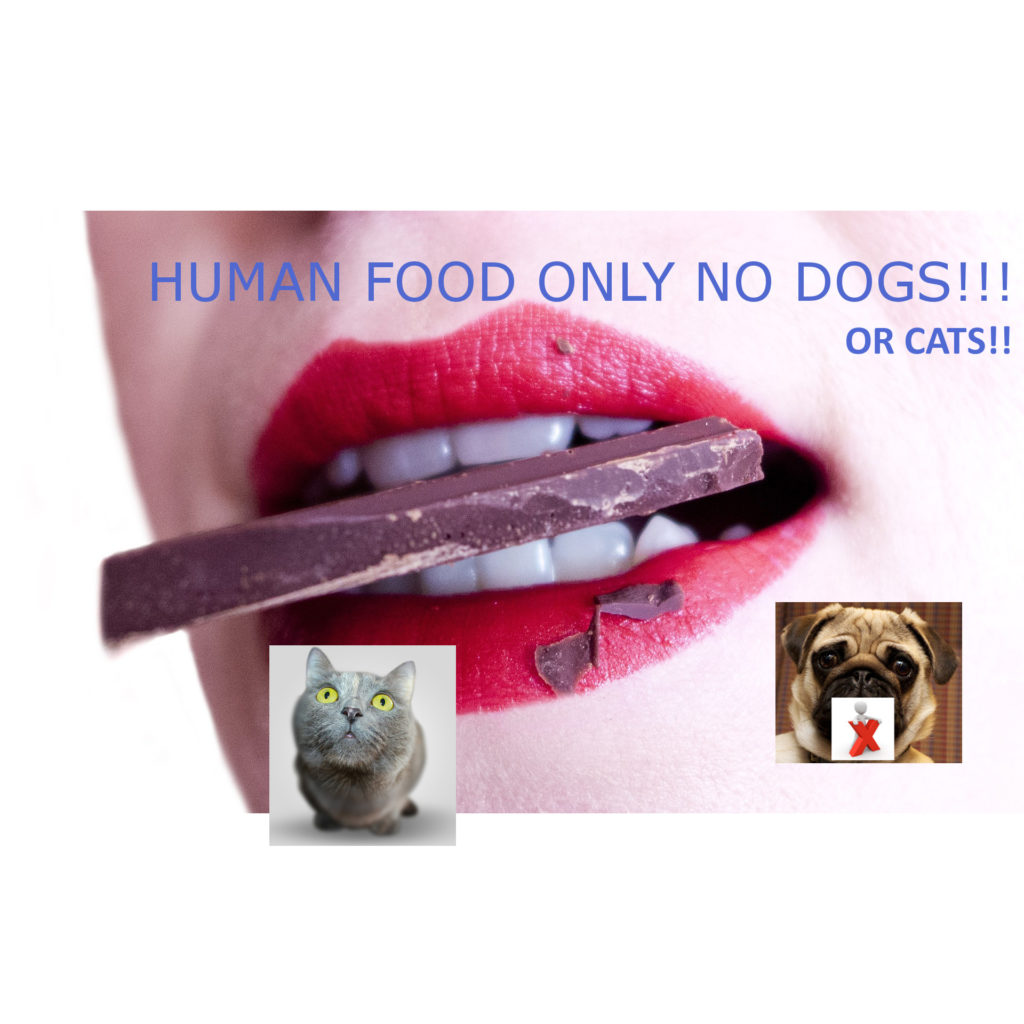Hello our top VET TIP for the day as we try to summarize all you need to remember to keep your pet safe in a busy life.
The essentials you need to know about Chocolate and your Dog.
 With Christmas fast approaching please remember chocolate can be toxic to dogs and Cats!!
With Christmas fast approaching please remember chocolate can be toxic to dogs and Cats!!
Veterinary practices see a huge increase in call numbers relating to chocolate at this time of year
- The toxic component of chocolate is theobromine. Humans easily metabolize theobromine, but dogs process it much more slowly, allowing it to build up to toxic levels in their system.
- A large dog can consume more chocolate than a small dog before suffering ill effects.
- A small amount of chocolate will probably only give your dog an upset stomach with vomiting or diarrhoea.
If you are worried or suspect that your dog may have eaten a large quantity of chocolate and they are showing any of the signs listed above, call your veterinarian immediately.
If you have a small dog that has eaten a box of chocolates, you need to call and go to your veterinarian right away. Do not wait.
Different chocolate types have different theobromine levels. Cocoa, cooking chocolate and dark chocolate contain the highest levels, while milk chocolate and white chocolate have the lowest. If you’re dealing with any quantity of dark or bitter chocolate, err on the side of caution. The high level of theobromine in dark chocolate means it takes only a very small amount to poison a dog. Less than an ounce of dark chocolate may be enough to poison a 44-pound dog.
The type of chocolate is defined by the quantity (percentage) of cocoa solids and this is defined by law in Europe and the UK. We will review this as Brexit progresses!
- White chocolate does not contain any cocoa solids, but it is made primarily of cocoa butter, sugar and milk solids. Theobromine poisoning is not a risk, but the high fat content may present a risk of pancreatitis (24-72 hours after ingestion).
- Milk chocolate contains a minimum of 20% cocoa solids (in the UK) and a minimum of 25% cocoa solids (in the rest of Europe).
- Dark chocolate is made without milk and contains a minimum of 35% cocoa solids
Signs of chocolate toxicity ( poisoning) include vomiting, diarrhoea, drinking lots of water and weeing lots as well, with an increased heart-rate . Less common signs include blood in any vomit, sometimes blood in the urine, rapid breathing and an irregular heart beat. Renal failure may occur but it uncommon.
Treatment is supportive at the vets, we make the dog ( normally a dog) sick and give them repeated doses of activated charcoal, IV fluids and sedation if required.
Although chocolate can make dogs unwell, serious cases are not common, and deaths are rare (typically 1 case per a year reported to Veterinary Poisons Service and none in recent years). Prognosis is guarded in dogs with seizures or arrhythmias after ingestion of chocolate.
NOTE:
Do not panic,
- Our own Whippet many years ago eat two full Terry’s chocolate oranges ( solid milk chocolate confectionery the size of an orange) and was totally fine!
- Be sensible mark the calculator mentioned and if your dog ever does eat some chocolate you will know how to evaluate if you need to see your vet etc.
- Remember that ideally, we need to see the pet within a very short period of the chocolate ingestion if we are to empty the stomach before the chocolate is absorbed.
- As always if you are not sure ring and speak to your vet.
- Although chocolate can make dogs unwell, serious cases are not common, and deaths are rare (typically 1 case per a year reported to the Veterinary Poison service and none in recent years).
BEFORE YOU ASK:
Chocolate can be lethal for cats. Although most cats will not eat it on their own, they can be coaxed to eat it by owners and others who think they are giving the cat a treat. The toxic agent in chocolate as in dogs is theobromine.
